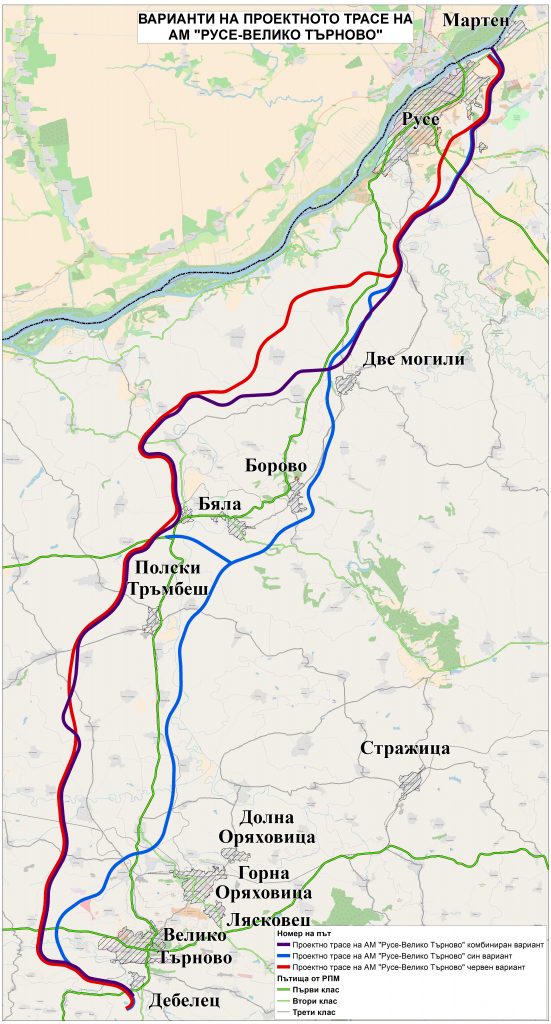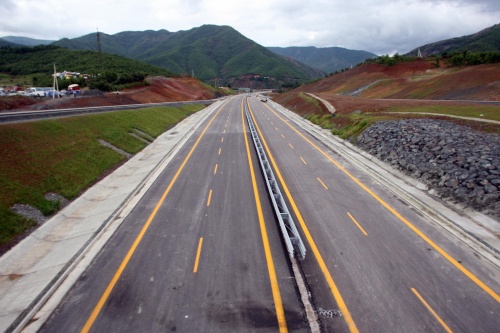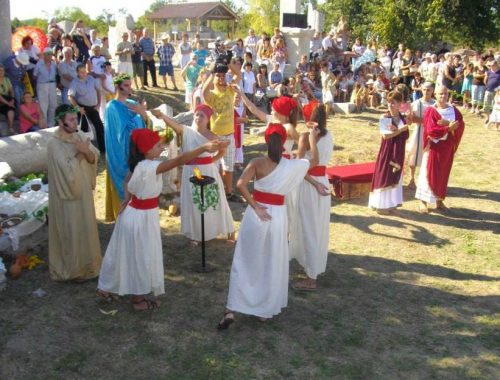Last month the government Agency for “Roads Infrastructure” (API) announced dates for a series of meetings to consult with local people on the proposed routes for the new highway between Ruse and Veliko Tarnovo, as reported by VT-Today Nov 23rd: Ruse-Veliko-Tarnovo-Highway.
The new road has an approximate length of 133 km. The beginning of the project is 3 km east of the existing Danube Bridge near Ruse and ends just south of Veliko Tarnovo, connecting with the existing road I-55 between the small towns of Kilifarevo and Debelets. The project is divided into three main sections: from Ruse to Byala, the bypass of the town of Byala and the section from Byala to Veliko Tarnovo.
A total of 10 meetings took place between November 28th and December 1st……The subject of the public debates was the Environmental Impact Assessment Report of the investment proposal. On November 28 was the discussion in the municipalities of Pavlikeni, Gorna Oryahovitsa and Veliko Tarnovo, and on November 29 in Polski Trambesh, Tsenovo and Byala. On 30 November the report was presented to the residents of Borovo, Dve Mogili and Ivanovo. On December 1 was the discussion in the municipality of Ruse.
The meeting in Gorna Oryahovitsa on Tuesday was attended by representatives of the largest businesses in the town, including Zaharni Zavodi, Arcus, Prity etc. There are strong arguments from these local businesses who are lobbying in favour of the “Blue” route as it passes the closest to their town. They argue that the route selected should be the one that passes as close as possible to the town. Gorna Oryahovitsa has the largest railway junction in the country, there is a regional airport as well as a major customs facility. The “Blue” option is the closest and is also the shortest route at 105 km, but it has the highest environmental impact and whilst construction is not prohibited, it is certainly an area that should be protected. The combined route is preferred by the API, it is 133 km long, has less impact on the environment and would have the lowest construction cost, but its connection to the current highway would be close to Momin Sbor, 12 km west of Veliko Tarnovo and 25km from Gorna Oryahovitsa.
The meeting in Gorna was also attended by another infrastructure company which presented an alternative proposal, which is largely a variation of the Blue route. Also passing close to Gorna Oryahvotsa, but includes a tunnel under Arbanasi to shoten the connections to the south. The representative of the company reminded the attendees that “a shorter route means less costs and less harmful emissions on the basis of which charges will be paid in the near future”. The MP Yavor Bozhankov stressed that the EU directive on the construction of such roads recommends taking the shortest routes and passing close to major centres that can provide different types of transport, such as Gorna Oryahovitsa.
The representative of Zaharni Zavodi, the largest sugar factory in Bulgaria, claimed that if the connection to the Ruse-Veliko-Tarnovo-highway is longer and the overall travelling time for them is an additional 40-60 km , their annual costs would be about 2 million levs higher. He also stated that “Gorna Oryahovitsa is the industrial heart of the Veliko Tarnovo district, so we hope that this will be taken into account and the connections that will be built will be shorter”. The CEO of Prity was also categorical that companies would have less costs and cheaper production if they did not give extra money for transport.
The chief of Police, was categorical that if the combined route is selected, as preferred by the API, it would not alleviate the problem of heavy vehicles passing through the villages from the highway at Polski Trambesh. They would continue to use the existing route to reach the customs office in Gorna Oryahovitsa.
According to the mayor of Polikraishte, if the Red route is selected, most of the traffic will continue to run on the old road between Ruse-Veliko-Tarnovo-Highway, instead of going to Veliko Tarnovo and then Momin Sbor to enter the new highway. The consensus was that even if the “blue” option is more expensive, it is the most convenient for everyone and will be repaid quickly because of the lower harmful emissions and costs. The participants of the Gorna Oryahvitsa meeting are adamant that if the Blue route is not selected, then they were all determined to fight in the court.
Debate, speculation and arguments continue for now, but VT-Today will try to keep you informed of updates for Ruse-Veliko-Tarnovo-Highway as they become available.
Sources for this article included the Official website for the Agency “Road Infrastructure” and local newspapers Yantra Dnes and Borba.



1 Comment
Interesting article and many factors will determine the “cost” of this project, geological due diligence, evironmental impact assessment, construction and engineering and ongoing maintenance assessment:
I’m all for tunnel construction as it abates noise, allows for lower road surface maintenence but is undoubtedly costly and requires strict speed monitoring with severe penalties for offenders.
To dig under Arbanasi will need a very diligent geological survey to mitigate any risk to this unique architectural and natural beauty site (apart from the apparent abhorent construction that seems to be allowed now on the South facing slopes).
The time of year this project is tendered and time given to complete construction, specification and assurances, that the specification will be rigidly adhered to, especially considering it will be a pan European route with potential for up to 60 tons rather then 40 tons!
Construction seasons, tunneling is less dependent upon these timings and seasonal calenders. Generally in North Central Bulgaria there ought to be two seasons, a summer season for maintenance and construction, and a winter snow and ice control season. The summer construction season begins in mid April to early May and continues into late October.
The winter maintenance season runs from November to the end of March.
Construction materials used, availability of material (shipping material in from outside the Region of Veliko Tarnovo vs. using local materials).
Amount of environmental mitigation required
Traffic control, such as detours and inconvenience / damage to rural /semi-rural infrstructure, before and during the project.
Lets hope that all will be incorporated and allowed for in the contractual documentation……….and more importantly, implemented!